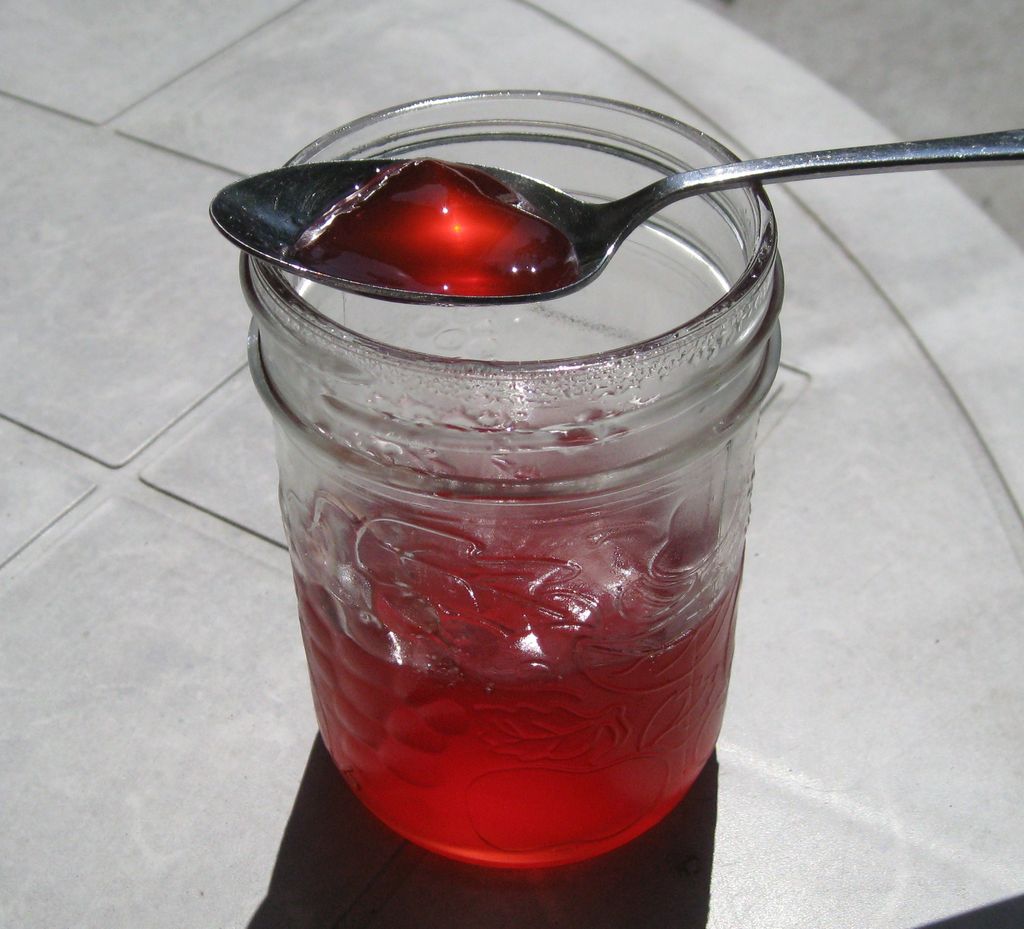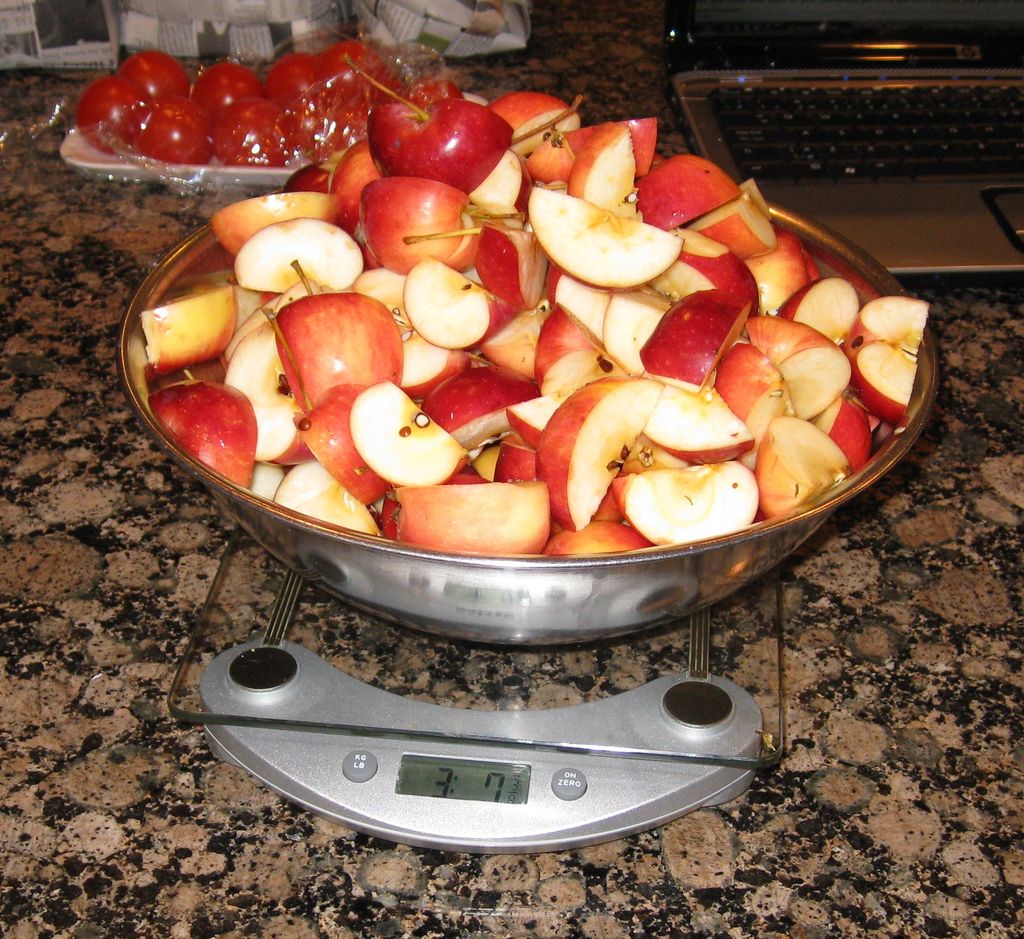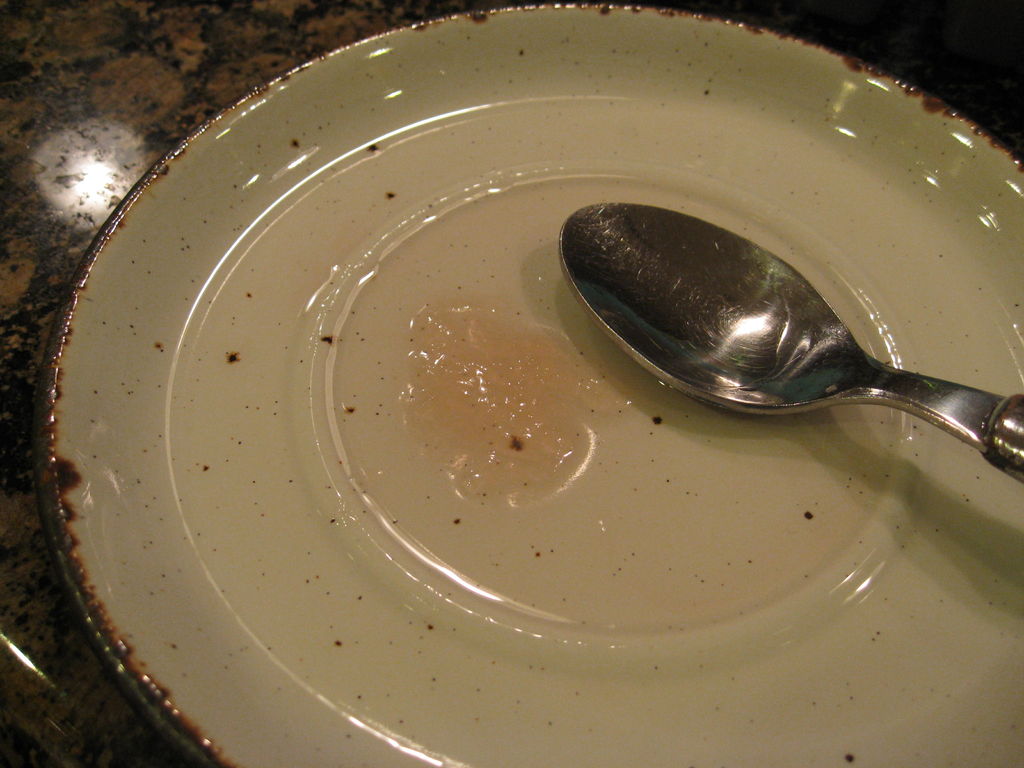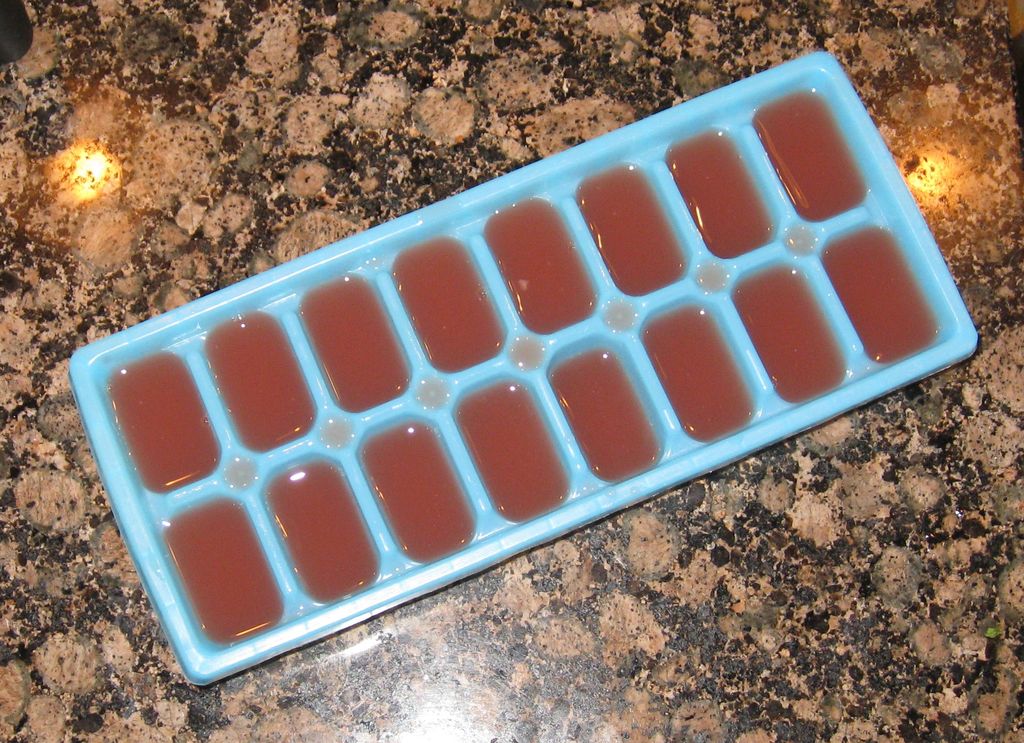Question ID: 4000-13732-0-2-3-4
Recipe Description
Pectin is concentrated in the cores and skins of all apples, and is especially strong in tart green apples. Using the cores and skins left over from making a pie is a great way to upcycle your scraps. For this instructable I used crabapples that didn't have enough flavour to bother with crabapple jelly.Ingredients:
3 lb Apples
4 cups Water
2 Tbsp Lemon JuiceUnusual Tools:
Jelly bag/cheese cloth and strainer
I am using the basic method from www.pickyourown.org, a website with a lot of very helpful information.
If using whole apples remove any imperfections that may impart an off flavour, and cut the apples into quarters or so. Place into a large pot with the water and lemon juice and simmer until the apples are completely tender, but not disintegrated. This could take between 20 and 40 minutes, depending on your apples and how large the pieces are.
Strain the results through a jelly bag to extract only the liquid. If you are concerned about cloudiness don't squeeze the bag. If you don't have a jelly bag (though I highly recommend getting one if you plan on making jelly) you can line a strainer with a few layers of cheese cloth.
To concentrate the pectiny goodness, boil the strained liquid until reduced by half. Stir occasionally to avoid getting a film.
If you want to test the level of pectin in your reduction, put a few drops into rubbing alcohol and the pectin will gel almost instantly. Obviously this should not be eaten.
To store the pectin you can can it as you would any other preserve, but I think it is more convenient to freeze it. I froze mine in an ice cube tray and transfered the cubes into a ziplock bag. You can now use the frozen pectin cubes in jams and jellies made from low pectin fruits.
This spring (2 years later) I used some of my frozen pectin cubes to make rhubarb jelly. Because your pectin concentrate and project will be unique this is just an example to get you started.
First I extracted the juice from the rhubarb by boiling and straining it.
I added a few cubes of pectin and tested the pectin level using a method that I found in Joy of Cooking: All About Canning. To test the amount of pectin I placed 1 teaspoon of juice in 1 tablespoon of rubbing alcohol then fished out the congealed pectin with a fork. A low pectin mixture forms loose strands of pectin while a high pectin mixture will form a single gooey ball.
Once the pectin level was looking good I carried on as usual, adding sugar and cooking the mixture until it passed the jelling test.
Remember that it can take 1 to 3 weeks for jams and jellies to set.
Question & Answer
Question: What is the correct order of the images?
Choices:
    |
| (A) |
    |
| (B) |
    |
| (C) |
    |
| (D) |
    |
|---|
 (D) (D) |